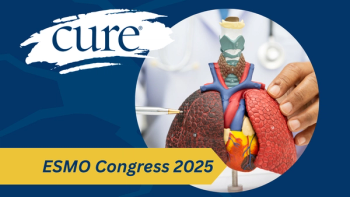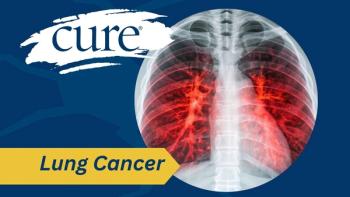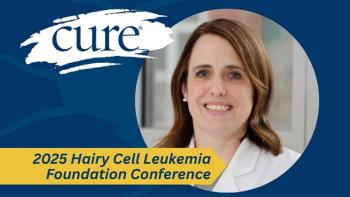
Finding the Right Tools to Improve Patient Quality of Life
Researchers adapted a screening tool to help treat the whole person during cancer care.
Supportive care given in combination with traditional cancer treatment can help improve patients’ quality of life. However, patient needs sometimes are not addressed — patients don’t always communicate them, or clinicians don’t ask.
The Supportive Oncology Collaborative wants to close the gaps to help better the lives of patients with cancer by working with local and national cancer centers. In an interview with CURE® at the 2019 American Society of Clinical Oncology (ASCO) Annual Meeting, Christine Weldon, an adjunct instructor at Northwestern University Feinberg School of Medicine, discussed the results of a study that examined the use of a screening tool used in patients to measure areas, such as distress, nutrition and physical symptoms.
CURE®: What is the Supportive Oncology Collaborative?
Weldon: This is a collaborative that was developed by the Coleman Foundation, which is a local foundation in the Chicago area trying to address what was in the Institute of Medicine report in 2013 that talked about delivering a high-quality cancer care system in crisis. There was a lot in that report that talked about the need for patients to have all of these different support services, (such as) distress issues, nutrition,
Two posters were presented at ASCO. What did they show?
We collected quality metrics at each of the cancer centers that has been involved with the Supportive Oncology Collaborative. We started in 2014, with data from before they did any improvements and started to track what percentage of patients are being screened for their supportive needs. Again, supportive needs being distress, social work needs, practical needs, nutrition, physical symptoms, pain, fatigue, physical function and a number of other factors. We put together data saying how many patients were being screened and then how many patients were receiving those services. We also asked questions about referral to palliative care. Patients being told specifically what the goal of their care is and patients also understanding their prognosis. We collected those for 2014, 2015, 2016, 2017 and now we are doing 2018.
We improved the rate of patients being screened to over 68%, not just for distress but screened also for their supportive care needs. We ended up from about a third of patients getting services to over 56% of patients getting services. This is in addition to treatment. So, they are all getting treatment, but they’re also getting all of these supplemental services to support them as a whole person not just the cancer.
The second poster is focused on the screening tool that we developed. In 2014 and 2015, we started to look at all the screening tools out there. But, unfortunately, they were really only giving that information to a social work team, so the social work team was using it to help with practical issues but on there was a whole list of physical problems that patients were facing. And we said wait a second, we need more than this. (We adapted these tools to create) PHQ4 (Patient Health Questionnaire 4) that aligned with the ASCO 2014 distress guidelines, then we added other components that were necessary based on guidelines and literature around palliative care distress management, nutrition, infection and other cancer guidelines that were outside of direct treatment. The data was across eight cancer centers, and the poster (presented at ASCO) represents the first 12,000 patients. We found (that) patients with elevated distress or anxiety scores across the board are going to have elevated levels of pain, fatigue, dry skin and sleep issues; lower physical function scores; and practical and nutrition concerns. We found distress alone is not enough to support the patient. If you start to deal with these other symptoms and the side effects (patients) are having, they’ll reduce their distress. Sending a patient to a psychologist because they have high distress may not be the right solution. We want to make sure they get the right
Did you receive any feedback about the tool from patients?
When we started (using) this tool, just based on national literature, we were expecting about 80% of patients to fill it out for the first time. And it’s been more than 95% of patients who completed it. It’s a self-filled out tool and it’s been working pretty well because it’s all information related to what they are experiencing and it’s a way to communicate with their physicians. The feedback we’ve gotten from patients directly is (that it) prepared them for their appointment, which we were really surprised with. (They also said), “This helped me think through things I’m dealing with that helped me communicate this to my physician or I hadn’t thought about that fact that I’ve had this dry skin that’s been driving me nuts.”
It gives them that chance to address it with their clinician and see if it’s something we need to adjust. Physicians and nurses have also given feedback that this has also opened up the communication at appointments. The patient comes in and they have this information from the tool. It gets the conversation going faster. We have some sites where it is in tablet form, so it feeds directly into their medical records. Most sites are using paper, but some are using the tablet form. (We learned) the paper is easier for the patients because it’s fast and comfortable. The tablet takes a little longer but is easier for the clinicians because it goes into the medical record.
What should patients take away from this research?
There is a lot about their care that they can have better information and help manage their symptoms to feel better. If they’re not feeling good and there is something going on, if they haven’t talked with their physician or their nurse, they should because sometimes there are things that can be done. Unfortunately, cancer itself has symptoms and the treatments have side effects but some of those can be managed better and sometimes there are ways to help the patient feel as good as possible. We’re never going to get (you) feeling totally back to how you felt before you had cancer, but if we can keep you as close to that as possible.





